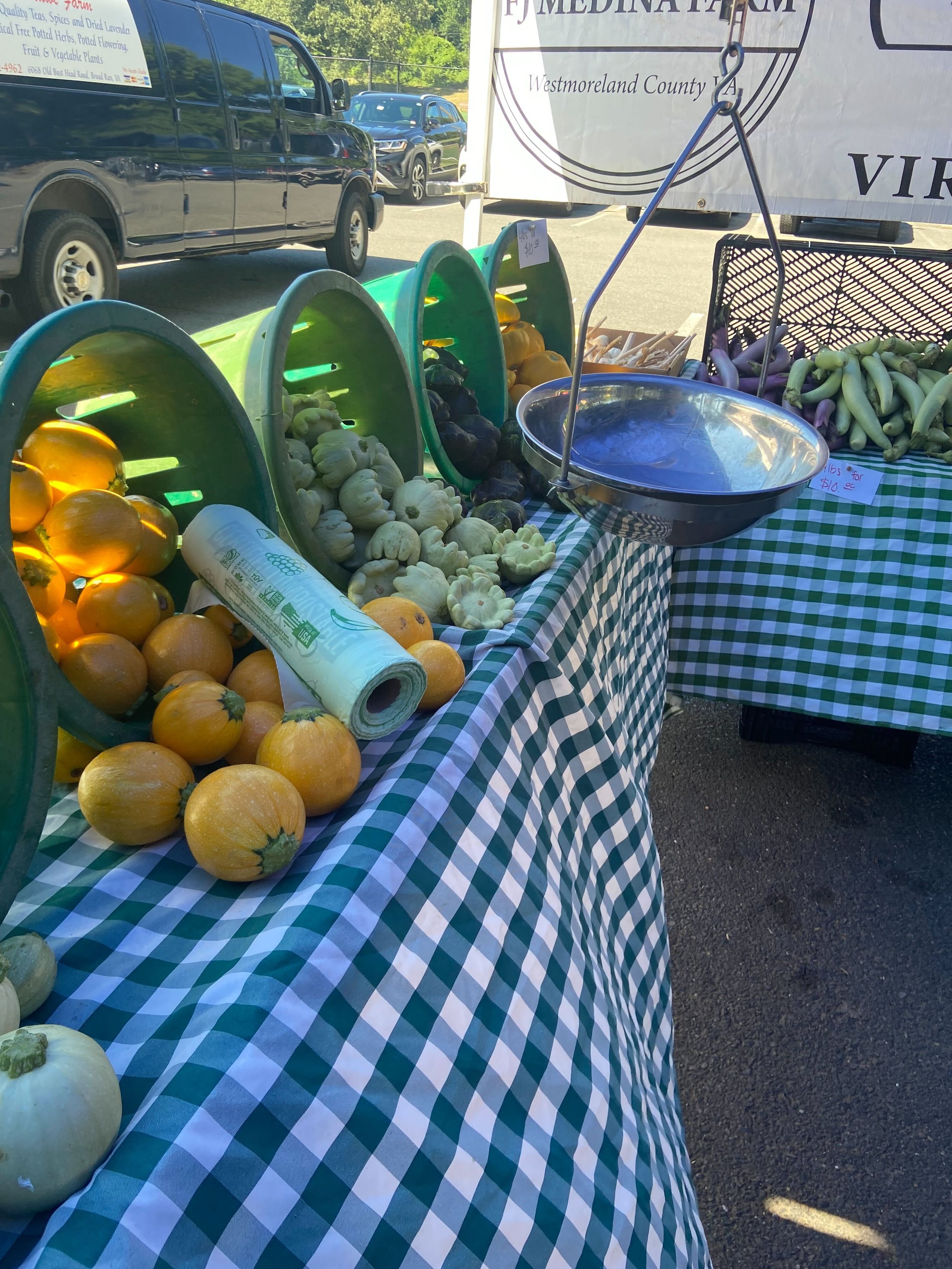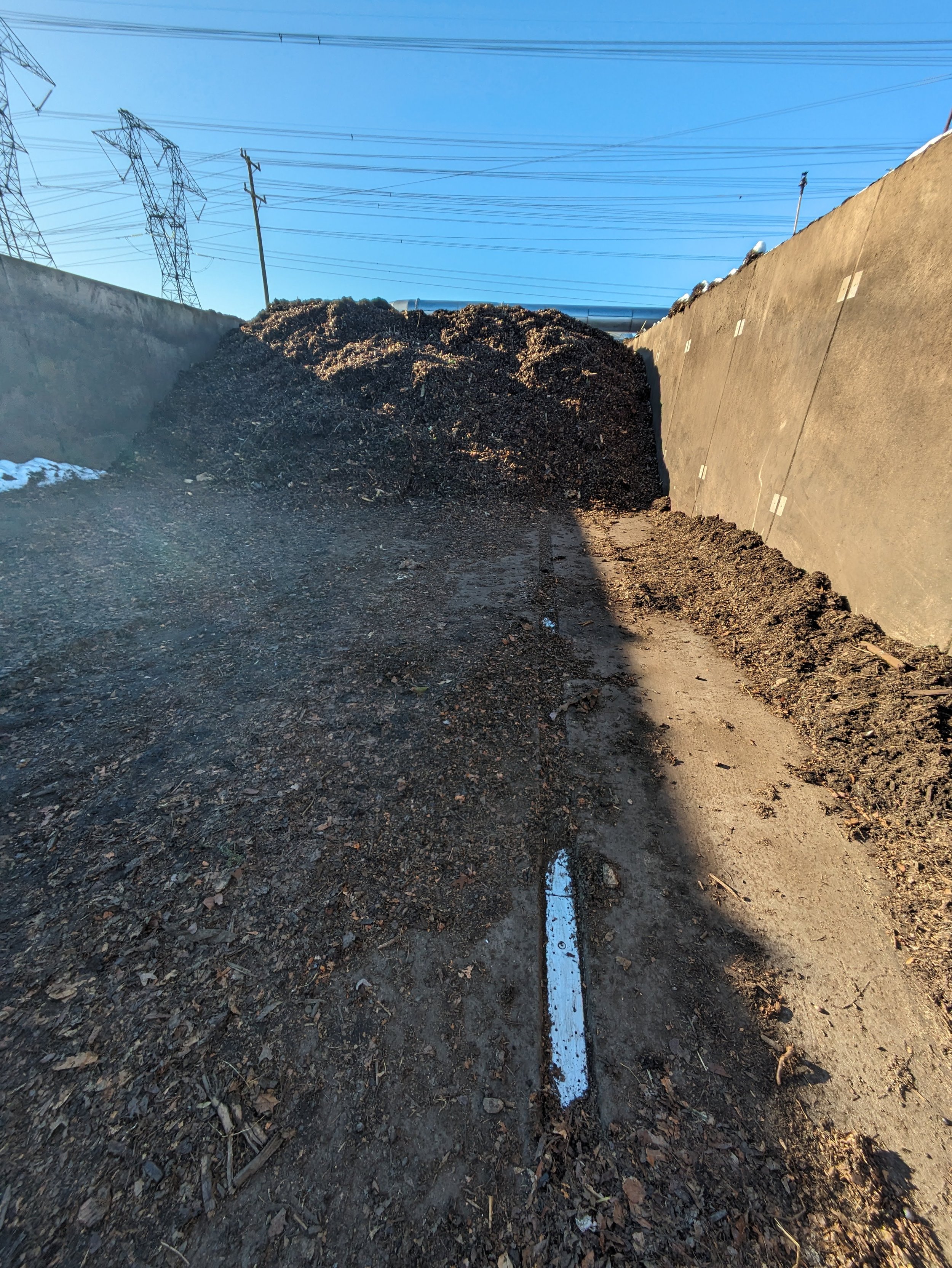Alternatives to Plastic
The best alternative to single-use anything
is always a reusable.
Breaking our single-use habit.
We have all gotten in the habit of depending on single-use items, and it is no accident. Plastic producers have a vested interest in perpetuating a linear economy that keeps paying them to make disposable items. Nowhere is this more obvious than the food and beverage industry. Unfortunately, most farmers markets have adopted the mentality by providing free single-use bags and containers—a convenience which shoppers have now grown to expect.
The truth is that we do not need single-use bags. Most often, we use them because they are given to us and because they are there. The moment that markets and vendors stop providing bags, customers will adapt and find a way to remember their own reusable bags and containers. This concept isn’t just theory, it’s been proven at a large-scale with retailers like Aldi, Lidl, and Costco. These stores stopped providing single-use bags and have not suffered for customers. The customers have simply adapted to the “new normal.”
Establishing a “new normal” at farmers markets.
While it is true that there are bulk, unconsolidated items at a farmers market, customers can bring reusable mesh produce bags to corral small items, or place them directly in a larger tote, bag, or basket. The real answer is not to substitute single-use plastic bags with a different type of single-use bag. It is to stop providing any single-use bags at all.
We also hear complaints that too many REUSABLE bags are out in the world, and that people now struggle with what to do with all of their extra reusables. A few options include:
Reminders. Remind customers to keep bags in their vehicles, on a hook by the front door, or small packable bags on a keychain clip so they always have some available. Some ways to get the message out: in-person at the market managers tent, online via social media, through newsletters and mailing lists.
Signage. Place large, visible signs in the parking area and near market entrances reminding people to bring their reusables before they enter the market.
Lending library. Start a bag library at the market and always have exchanged bags available for people to take some/leave some. This can include reusable produce bags.
Sell reusable bags. Allow vendors to sell reusable bags, or sell bags with your market’s and/or local sponsors’ branding (another source of revenue!).
“In short, there is ample evidence that bio-based, biodegradable and compostable plastics could lead to significant environmental consequences. Companies’ attempts to salvage their reputations through the proxy of bioplastics should be regarded as another greenwashing tactic to continue a business-as-usual linear economy.”
— Talking Trash
Bio-based alternatives
“Bio” doesn’t necessarily mean green, eco-friendly, biodegradable, or sustainable.
The root of the prefix “bio” is bios, the Greek word meaning “life.” Today, it is often used in marketing to suggest a product is especially clean or “green” for the environment. As concern for the planet and climate change grows, corporations have developed new eco-friendly marketing (a.k.a. greenwashing) to assuage consumers’ concerns, while simultaneously garnering good press and maintaining profit margins.
When it comes to bio-based plastic, or bioplastic, the “bio” indicates that a product is produced (at least in part) from renewable biomass—think cornstarch, sawdust, sugarcane, etc. Once formed, these polymers can take on many of the qualities of conventional plastics, including the nuance of their eventual disposal. Under the broader umbrella of bio-based plastics are several subgroups, primarily distinguished by how they degrade over time:
Degradable – a product that can be broken up either biologically or chemically over time. With enough time, all materials will degrade into smaller and smaller pieces.
Biodegradable – a product that can be broken down biologically (by living organisms such as bacteria, fungi, or microbes), but may take years or decades to do so. The resulting products are eventually reabsorbed by the surrounding environment, but may leave behind harmful toxins and microplastics.
Compostable – a product can be broken down biologically, at a faster rate, into natural elements (water, CO2, inorganic compounds and organic biomass) without leaving toxic residues and harming the environment.
So…what’s the best option?
The best alternative to single-use plastic is a reusable item. This should always be the first recommendation for vendors and customers. Plastic alternatives, however, might be the right stepping stone for your market as you work towards eliminating all single-use plastic shopping bags and items from the market.
If your market does take this intermediary step, be mindful you are not merely replacing one single-use item (e.g., plastic bags) with another (e.g., a paper, compostable, or bioplastic bag). For alternatives to actually have a better environmental impact than conventional plastic, they must be accompanied by the necessary education (e.g., how to correctly dispose of compostable items, how to see through greenwashing, etc.) to achieve long-lasting success.
It is important to find out from your region’s compost haulers and commercial composting facilities precisely which items they will and won’t accept. There is no benefit in having supposedly “compostable” bags or products being distributed at your market that are not actually able to be composted!
The relationship between degradable, biodegradable, and compostable bioplastics.
The real problem isn’t just single-use plastic, it’s ‘single-use’ itself.”
— Upstream Solutions
Compostable alternatives
“Compostable” doesn’t necessarily mean better.
In fact, research has shown that when not properly disposed of, compostable plastic items actually contribute to pollution. According to a Beyond Plastics report, “Compostable products and bioplastics often produce significantly more greenhouse gas emissions (GHGs) than single-use plastic [over their lifetime] due in part to the emissions created during the agricultural phase.”
Moreover, there are gaps in education and equity surrounding the proper disposal of compostable products. Compostable plastic is “engineered to fully decompose [as opposed to merely breaking up into smaller microplastic fragments] under certain conditions that can typically be met only in an industrial composting facility.” Yet, not all communities where compostable plastic is being sold have a robust industrial composting infrastructure in place. Thus, consumers buy or are given compostable plastics and might put them in their backyard compost (where it likely won’t break down due to suboptimal conditions), or more likely, will dispose of items in their recycling or trash. The former outcome contributes to contamination of recycling operations; the latter perpetuates our waste and pollution problems. In fact, “When compostable products end up in a landfill or incinerator, their climate footprint increases: compostable packaging that ends up in landfills releases methane, a greenhouse gas 30 times more potent than carbon dioxide” (Beyond Plastics).
Best practices
If your market is exploring compostable alternatives to plastic items, be sure to:
First, ensure that there is a commercial/industrial composting infrastructure in place in your region. Better yet, reach out to the composter and ask what material(s) they do or do not accept. Developing a relationship with your composter before you begin the transition to compostables will help ensure your efforts are successful.
Choose products that meet compostability standards. Look for third-party certifications (like BPI or CMA), which verify that products meet ASTM D6400 or D6868 conditions for compostability.
Communicate with vendors and customers. Proper compost education goes hand-in-hand with compostable products, and can also ensure that your market’s efforts are worthwhile. Again, engage with a local compost collector, processor, or expert to help communicate the proper ways to dispose of compostable products (e.g., whether items can be put in backyard compost piles or must be commercially composted, where/how individuals can drop off their items for composting, where not to dispose of compostable products, etc.). This education should happen before, during, and after the point of sale (or when customers receive a compostable product).
The high-heat, controlled environment of industrial composting facilities is ideal for rapid decomposition of organics and certified compostable products. (Credit: Clean Fairfax)
Remember, systemic change starts small and grows.
So, on your market’s journey towards the ultimate plastic-free destination, we encourage and empower you to dream big, take those small steps, make informed decisions, and celebrate the benefits for all stakeholders AND the planet!
Resources
For more information on bioplastics, compostables, and alternative packaging, check out these articles and reports:
Bioplastics: A false solution to plastic pollution? - Talking Trash (download full report)
The False Promise Of Bioplastics and Compostable Plastics - Beyond Plastics
Product Standards and Certifications - Good Start Packaging
The Dirty Truth About Compostable Packaging - The Atlantic











